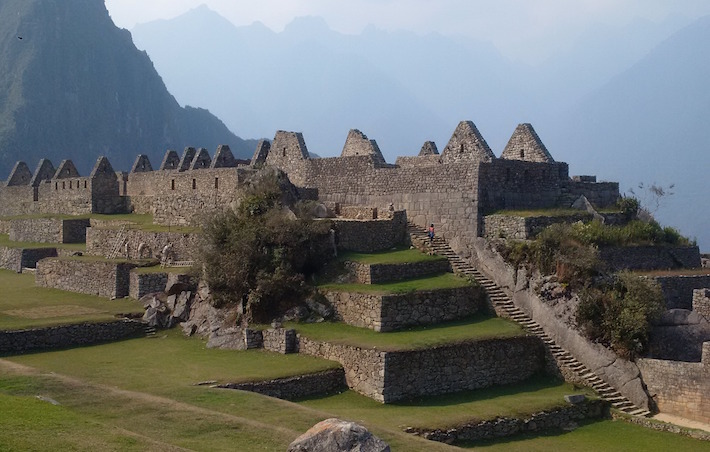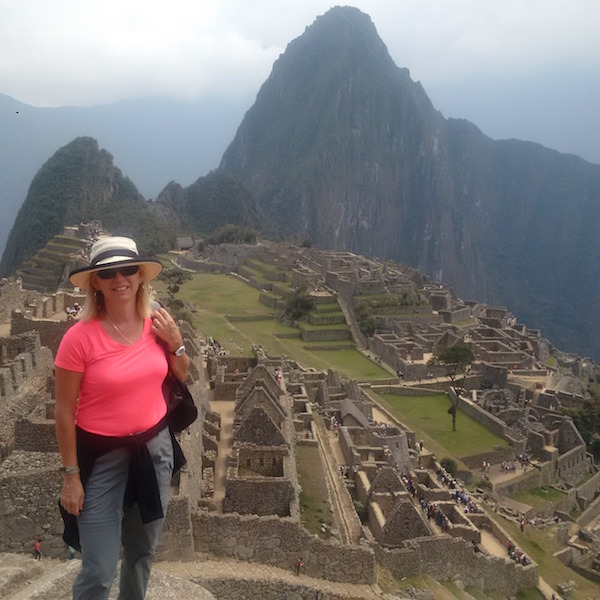 “Do you know the #1 thing North Americans want to see in Peru?” It was one of the first things our Vantage Adventures tour guide asked us when we landed in Lima. “They want to see “what’s next”. While some of us might have trouble shaking off our agenda focused, minute by minute focus when we travel, Peru is one place where you might want to make sure you know “what’s next”, as it can be a complicated place to travel.
“Do you know the #1 thing North Americans want to see in Peru?” It was one of the first things our Vantage Adventures tour guide asked us when we landed in Lima. “They want to see “what’s next”. While some of us might have trouble shaking off our agenda focused, minute by minute focus when we travel, Peru is one place where you might want to make sure you know “what’s next”, as it can be a complicated place to travel.
Of course, when you tell people you’re going to Peru, they assume that you’re going to see Machu Picchu, one of the Seven Wonders of the World. And we did. Discovered by American Hiram Bingham (XXX) in 1911, this has become one of the most visited tourist sites in the world, with approximately 3,000 people passing through daily. What did we do next? We hiked just a mile up the Inca Trail (entire trail takes four days to hike) to the Sun Gate, which provides a breathtaking view of the Machu Picchu site.
But getting there is not easy. The most direct route is to fly from Lima to Cusco, then take a bus to the Sacred Valley to the small village of Ollantaytambo for the train ride to the village of Machu Picchu. This is the only form of transportation that can get you there, and needs to be booked months in advance. The 90 minute journey is beautiful, traveling through the base of the Andes Mountains, with the Urubamba River running beside. The village of Machu Picchu is a strange combination of shanty type buildings, outdoor markets, pubs, upscale hotels, gourmet restaurants, while an occasional alpaca might wander by.
The site of Machu Picchu is reached by bus, up 1,000 vertical feet via a harrowing bus ride up zigzag roads. It was built in the 1400’s, as a respite for wealthy Incas. Nestled between two mountains, at an altitude of 8,000 feet, it’s the perfect spot for growing coca leaves, which was used as a currency at the time. Coca leaves today are still used to combat high altitudes, and you can get it in dry leaf, tea, candy, jam, and other formats. (I wanted to bring some back to Canada, but certain types of leaves apparently contain cocaine, so it is illegal to transport as all have been banned.)
Cusco is a city of about 500,000, and is itself a UNESCO World Heritage site. One of the most interesting places to visit within the city is the San Pedro Market, the largest of six markets in Cusco. Here, you can buy everything from fruits, vegetables, cheese, meat (including guinea pig, which is a local delicacy), flowers, and on the day we visited, 43 different types of potatoes.
Things you should know about visiting Peru:
- They really do guinea pig, and it is considered to be a special dish. It is culturally polite to eat it, if you are offered. (Tastes like rabbit.) Alpaca is also a favourite, but more like a beef, offered in tenderloin, steak, burger for stew formats.
- The altitude difference is extreme from North America. It can get as high as 14,000 feet in Cusco, but drops to 8,000 in Machu Picchu and the surrounding area. You should consult a doctor about altitude medication, or when you arrive in Peru, drink lots of water, eat lightly, avoid alcohol and do not exercise or do anything strenuous for at least the first 24 hours. Many hotels offer oxygen for those suffering from altitude sickness (mostly headaches).
- The plumbing and sewage treatment is not sophisticated. You must not put anything down the toilet, including toilet paper. Many places do not offer toilet paper in their washroom, so it’s smart to travel with some of your own, to use and dispose of in the garbage can.
- There are many great photo opportunities with the local residents of Peru. Many women dress in traditional garb, carrying small goats, dressed like babies. Many women also dress their small children in Peruvian costumes. But they all expect to receive money for posing for pictures; this is how they make their living. Be respectful of that.
- While visiting a local market, know that all prices are negotiable. Market vendors for the most part do not want photos of themselves, or their wares, taken.
- The local drink is called a Pisco Sour, which is made up of the liquor pisco (around 40% proof), lime juice, sugar syrup, egg whites, ice and bitters. Like a sour lime slushy.
- Their three most popular sports are soccer, soccer and soccer.
- Because of their closeness to the equator, the sun goes down at about 5:30 every day, and the temperature can drop dramatically when this happens. Always wear layers. The sun is also very intense, so sunscreen is necessary, as is bug repellent as the mosquitoes are quite persistent.
- Highly recommend traveling with a guide, either local, by the day, or with an arranged travel group, for your whole trip. There are many moving pieces to get to buses, hotels, trains, tickets to sites, etc., as well as the history and cultural references that the guide can provide, which are hard to get from reading materials. As well, many residents speak only Spanish, and no English, even in restaurants.
Where to stay:
The Peruvian hotel chain Casa Andina has locations in all the sites you want to visit. Their “Private Collection” line offers luxury and gourmet dining. Wi-Fi is extra, but very reliable and fast.

About Kathy Buckworth:
Author, I Am So The Boss Of You (Random House)
Chief Family Advisor, PCFinancial & PCPlus
Columnist, “Parent Hacks” Post City Magazines
Travel Feature Writer, Metro News
TV Columnist, “Get Set, Go!” CHCH Morning Live
www.kathybuckworth.com
Twitter @KathyBuckworth
Instagram @KathyBuckworth
Facebook AuthorKathyBuckworth